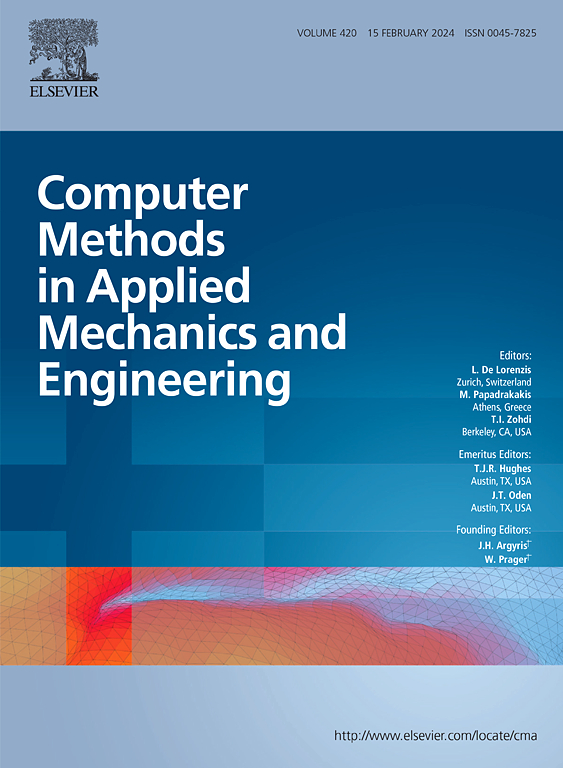Probabilistic learning from real-world observations of systems with unknown inputs for model-form UQ and digital twinning
IF 6.9
1区 工程技术
Q1 ENGINEERING, MULTIDISCIPLINARY
Computer Methods in Applied Mechanics and Engineering
Pub Date : 2025-03-11
DOI:10.1016/j.cma.2025.117863
引用次数: 0
Abstract
In engineering systems, a digital twin serves as a digital replica encompassing both physical assets and their associated processes, such as manufacturing and certification. The implementation of digital twins offers substantial potential for various applications, including improved design, enhanced collaboration, effective energy management, risk mitigation, lifecycle management, and predictive maintenance. However, existing definitions of a “twin” are often ambiguous and lack a structured approach for developing digital twins, particularly for systems with unknown inputs. This paper addresses these shortcomings by proposing a clear definition and a robust methodology for building digital twins. Our methodology integrates projection-based model order reduction, a rapid approach for identifying unknown inputs, and a non-parametric probabilistic method for modeling and quantifying model-form uncertainty. Additionally, it incorporates a probabilistic learning approach for performing stochastic model updating. The effectiveness of this digital twinning methodology is illustrated through a case study involving an elevated truss footbridge located at the Autodesk Research facility at Pier 9 in San Francisco with unknown inputs. This case study underscores the importance of accurately modeling uncertainty to enhance the performance and reliability of digital twins in real-world engineering applications.
求助全文
约1分钟内获得全文
求助全文
来源期刊
CiteScore
12.70
自引率
15.30%
发文量
719
审稿时长
44 days
期刊介绍:
Computer Methods in Applied Mechanics and Engineering stands as a cornerstone in the realm of computational science and engineering. With a history spanning over five decades, the journal has been a key platform for disseminating papers on advanced mathematical modeling and numerical solutions. Interdisciplinary in nature, these contributions encompass mechanics, mathematics, computer science, and various scientific disciplines. The journal welcomes a broad range of computational methods addressing the simulation, analysis, and design of complex physical problems, making it a vital resource for researchers in the field.

 求助内容:
求助内容: 应助结果提醒方式:
应助结果提醒方式:


